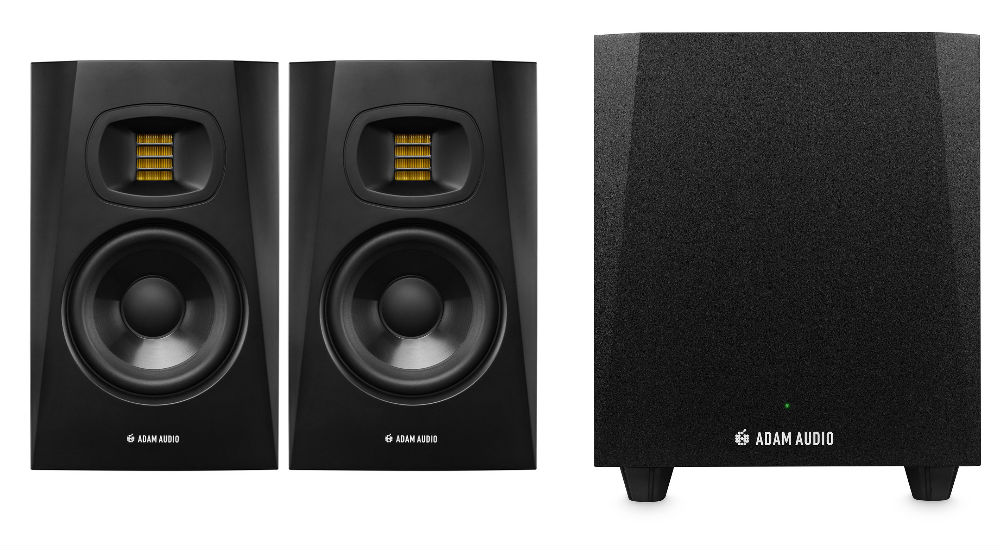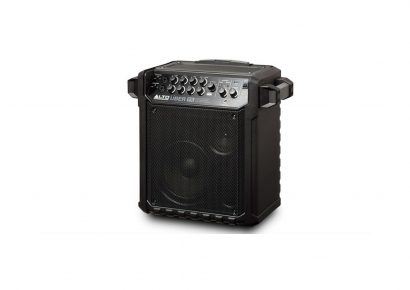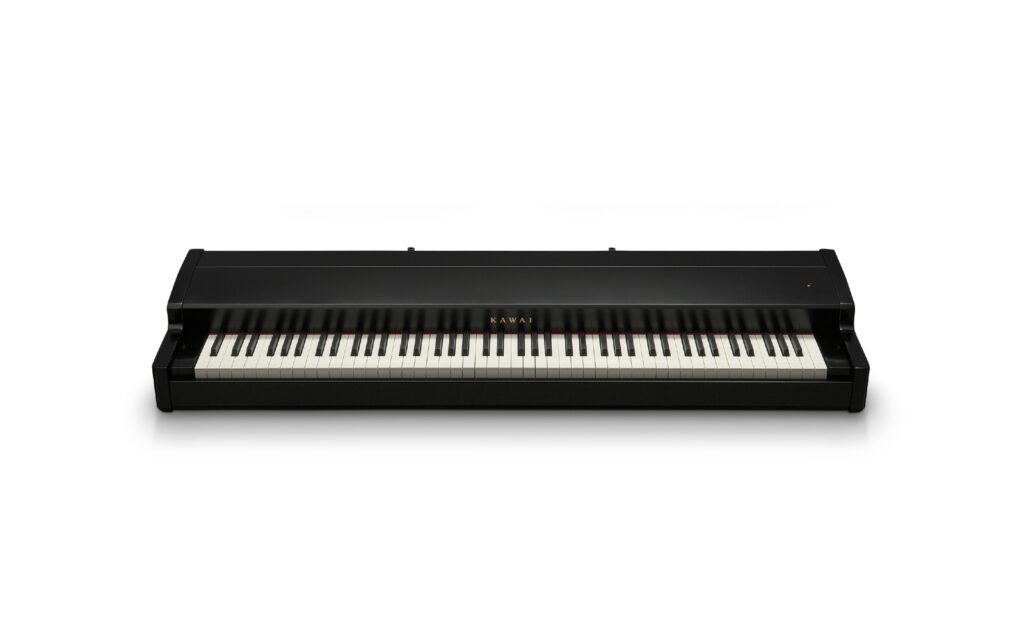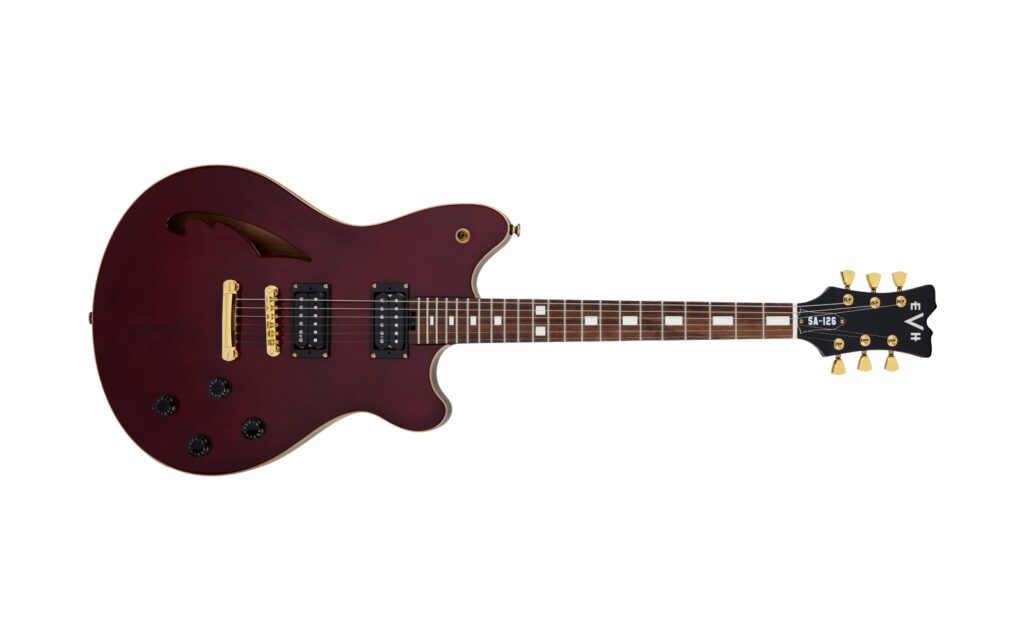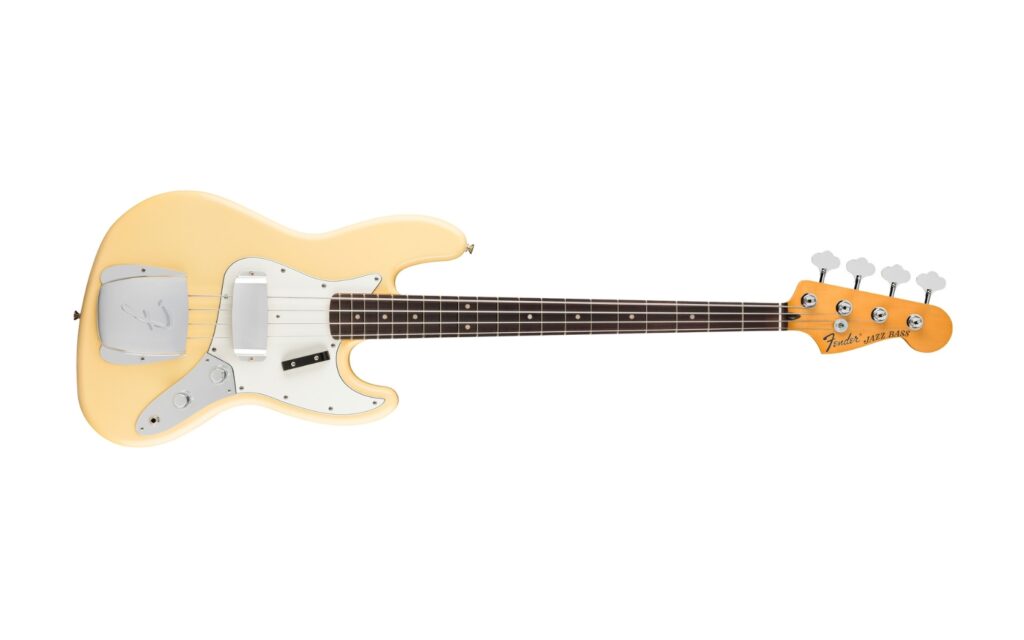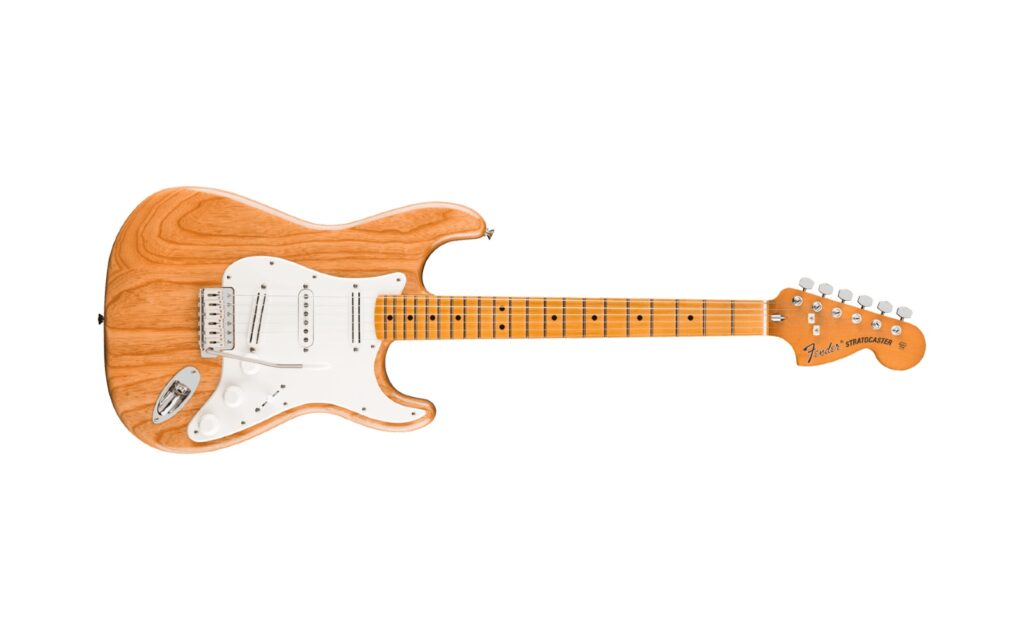Federal Audio | Enquire for pricing
About a year ago, ADAM Audio released their competitively priced T5V near field monitor, along with its larger sibling, the T7V. As a follow-up, Adam have now unveiled the T10S, a subwoofer designed and matched for use with either the T5V or T7V.
Admittedly, the T5V and T7V can already produce bottom end down to 45Hz and 39Hz respectively, but the addition of a subwoofer, especially a matched one, makes this important region of your mix more clear. The T5V is, more specifically, a near-field studio monitor with a 5” woofer, bass port and ribbon tweeter. The T5V and T7V have on board DSP-powered crossovers, and when used in conjunction with the T10S, no crossover is needed as the sub itself has a selectable crossover that matches the crossover/high-pass filter on the near-field monitors you’ve chosen.
In use, the T5V is a phenomenally powerful speaker for its size. The bottom end reproduction is fair, but only improved by the T10S. As with most ADAM Audio monitors, these are really well balanced, and very revealing in the upper mids and highs, without being overhyped. Work on ADAMs usually translates fairly well, particularly because of their balanced response in both highs and lows. A polypropylene woofer and 1.9” accelerated ribbon tweeter assist in these departments. The T5V are fairly pleasing to listen to, even over long periods of time. The redesigned cabinet geometry is optimised for a more precise sound, and the rear-facing bass port produces low-end without blasting air back at you. The rear of the speaker reveals high-pass and low-pass filters to treat the speakers to your room, as well as a volume control and XLR or RCA in. Both the T5V and T7V have analogue inputs to keep the circuitry as clean as possible.
The T10S slots itself nicely into this set-up with XLR and RCA I/O as well, and the internal crossover handles messy frequencies for you. To make things more practical, your signal comes out of your interface or soundcard, into the T10S sub inputs, out of the outputs and into your choice of T5V or T7V. From here you can tune any of the speakers more accurately so they work together and not against you. The T10S features a bottom facing port, so you’ll feel the bass without it blasting your feet or a band sitting outside of the sweet spot. The T10S is a compact sub with a lot of power, measuring only 390 mm H x 318 mm W x 413 mm D, so you’ll have no issues fitting it into your room.
The T series of speakers overall are really highly spec’d for their price point. ADAM Audio consistently deliver great products, but they also deliver products in top-tier price points because of the sheer quality of the design, components and construction. The T5V and T7V feature matching U-ART 1.9” accelerated ribbon tweeters and a HPS wave-guide to ensure those sweet and balanced highs hit your ears. The polypropylene woofer and rear-firing bass-reflex port handle the mids and lows, while the construction of the speaker itself handles all those vibrations ranging from 39Hz up to 25kHz, and is capable of withstanding the max SPL of 106dB for a pair. The T10S is powered by a single Class D amplifier, which feeds the 1×10 down firing speaker as mentioned before. The sub can reproduce frequencies all the way down to 28Hz, and generally up tp 120Hz unless the crossover is bypassed and you’ll be hearing up to 300Hz. A max output of 104dB will keep your neighbours bopping along to your mixes.
Overall, the T series of speakers are designed to be used together and function especially well when used in this manner. The T5V and T7V are great speakers in their own right, but the T10S sub brings them to life. Despite their price point, the T Series near-field monitors aren’t budget and would function really well in a professional setting even as a main monitor. They’re balanced, honest, but still enjoyable to listen to – a feat that not many speakers manage to achieve, they’re usually one but not the other. You’ll be confident, your clients will be blown away, and you’ll spend less time noticing issues in mixes because the T Series translates so well.
